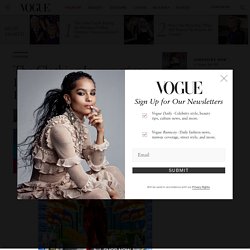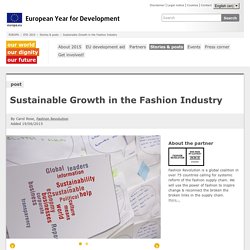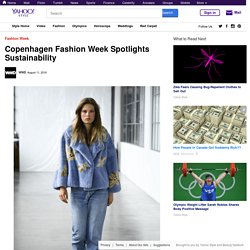

H&M Foundation Offers €1m Grant For Ideas To Make Fashion Industry More Sustainable. Sustainability in the Fashion Industry - Supply Chains Effect on the Environment. As one of the biggest players in the global economy, the fashion industry has a responsibility to help protect the environment.

We’re commemorating this Earth Week by asking some tough questions about our impact on the planet and what we can do about it. We’ll also be profiling people and companies who are instigating change. We’re calling the series “,” and to kick things off, Maya Singer takes a look at the harsh realities of the fashion supply chain. I used to have nightmares about plastic. Back in 2008, I spent New Year’s Day immersed in The World Without Us, Alan Weisman’s thought experiment about what would happen to Earth if the human race was suddenly raptured off the face of it. The World Without Us is one of the seminal texts of my life. “Supply chain.” In the era of hypercapitalism, the typical fashion supply chain is vast and Rube Goldberg-esque.
See what I mean about a machine? So I’m going to try to make this interesting. The impacts of the fashion supply chain are vast. How can the fashion industry become more sustainable? Sustainable Growth in the Fashion Industry. Sustainability encompasses three main areas: environmental, social and economic.

Over the last decade sustainability and sustainable growth has become one of the most prominent and important topics in our society. Even calling it a topic, would somewhat marginalise something that many would refer to as a global issue which is often overlooked usually due to monetary reasons. Sustainability across all avenues, from the fashion industry to the boardroom has been at the forefront of our endeavours to create a more ethical and environmentally advanced society. One would surely think sustainable growth which is holistic in all its principles would be something that is used across the board, almost acting as a golden rule which was trusted and used on consistent bases in order to maintain an economical and ethically adequate business. If we are to focus on the fashion industry -There is a growing movement towards responsible and sustainable disciplines.
Written By Carol Rose. Copenhagen Fashion Week Spotlights Sustainability. Copenhagen Fashion Week, which began Wednesday and runs through Friday, is giving sustainability some good play.

The event held in the wake of the Copenhagen Fashion Summit, which drew 1,250 industry delegates last May, had sustainable label Fonnesbech on its first day — Crown Princess Mary of Denmark sat front row at the Fonnesbech display — and two Swedish brands with a sustainability perspective on day two: House of Dagmar and Uniforms For The Dedicated, two newcomers to the Copenhagen calendar. “The vision is the gap that Copenhagen could fill: to take the position as the sustainability destination and bring together the brands from all over the world who want to work on sustainability,” said Eva Kruse, chief executive officer of Copenhagen Fashion Week, noting that she would like H&M to reveal its Conscious Collection during Copenhagen Fashion Week, as well as draw such players as Stella McCartney and Prada, who both have an ethical point of view in terms of production. What Sustainability Means To The Millennial Generation. Jo Godden, Founder of RubyMoon, discusses how brands can limit their environmental impact worldwide According to Goldman Sachs, there are around 92 million millennials in the US currently, making them the largest demographic in American history so far.

Critically, they are also set to be the most important consumer group yet, with estimates of annual spending projected at around $200 billion by 2017, and $10 trillion over their lifetimes as consumers. With these figures comes the all-important question of how business can best cater to this multi-faceted millennial marketplace—the real questions being what do they value? And therefore, what do they want to spend their money on? The question points us back to sustainability. Recent studies indicate that millennials have a new, insistent consumer appetite that is colored distinctly green.
However, the main problem facing these pioneering brands is gaining consumer exposure. This is why the revolution must begin at the top.